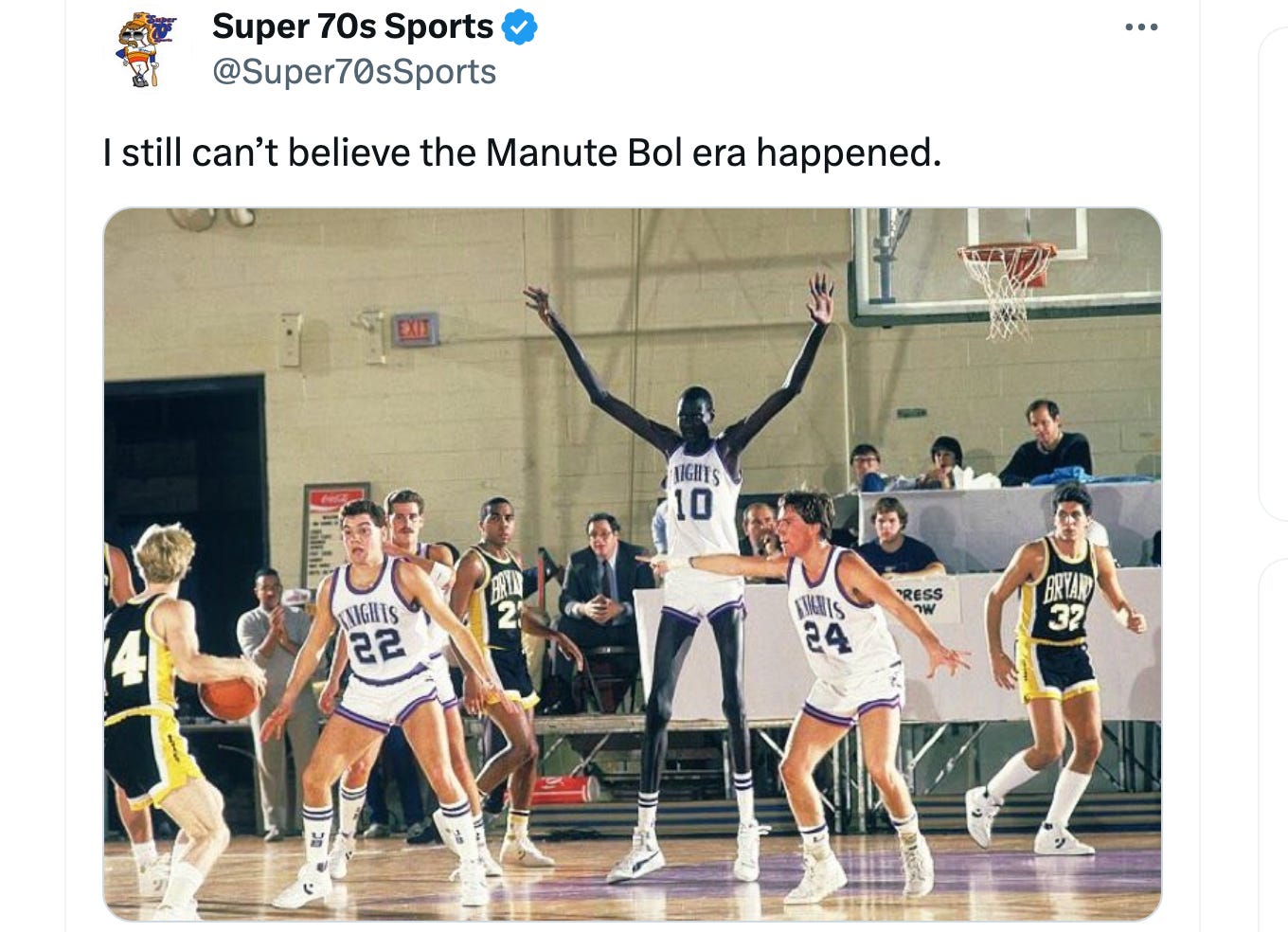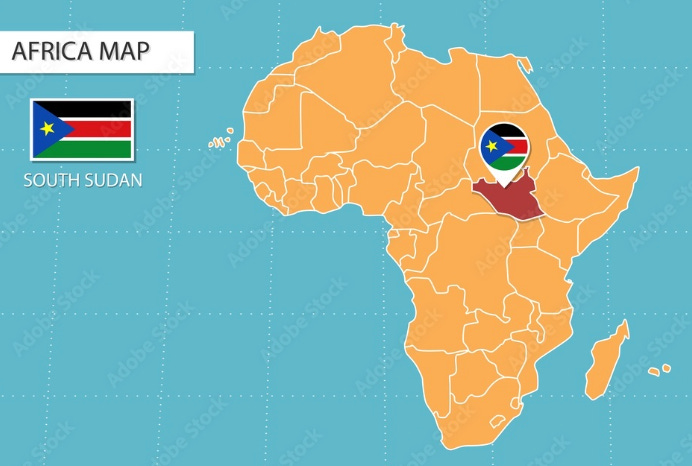Team USA barely survives South Sudan in Olympic basketball warm-up
The elongated Nilotics of South Sudan are rapidly improving at basketball, a game they seem born to play due to their height.
South Sudan is a new country that broke free from Sudan for racial reasons in 2011: Sudan was traditionally dominated by brown Muslim Arab speakers from the northern half of Sudan who pushed around the tall black Christian and pagan tribesmen of the south, such as the famously elongated Nilotic Dinkas and Nuers.
This is South Sudan’s first time qualifying for the Olympics in basketball.
Their basketball tradition goes back to the 7’7” but only 200 pound 1980s curiosity Manute Bol, a Dinka herdsman who once killed a marauding lion with a spear.
The next generation included a more traditional talent, Luol Deng, the son of an exiled Sudanese parliamentarian, who made two NBA All Star games and is now the chief executive of Team South Sudan.
Due to the extraordinary tallness of the South Sudanese, basketball makes sense for their country to invest in. Deng recruits chiefly among fellow members of the South Sudanese diaspora abroad. The 2024 South Sudan national team isn’t exceptionally tall by global standards — the roster tops out at 7’-1” — but it’s nice to see them playing well.
In an exhibition game today, Sudan almost beat a Team USA stacked with legends like LeBron James, who had to lead a furious charge to bring USA back from a big deficit and win 101-100 on James’ drive with eight seconds left.
Generations ago, the fact that South Sudanese tend to be tall and skinny was considered interesting. African is full of different tribes that are hard for Americans to distinguish in their mind’s eye, so the fact that Dinkas and Nuers tend to be of memorable height was once considered a nice thing for an educated person to know.
For example, in 1933, Chicago’s Field Museum of Natural History opened a magnificent exhibit of sculptress Malvina Hoffman’s 104 life-size bronzes of The Races of Mankind. Perhaps the most memorable is the 6’8” Nuer Warrior:
But in 1969, being informed about what people around the world look like suddenly fell out of fashion. During the 1990s, the Nuer warrior was stashed in the museum’s basement service area next to the Mold-o-Vac and Pennycrusher machines. Today, the Field Museum explains:
The 1933 exhibition promoted scientific racism, which defined a set of racial categories based on physical appearance. Having concluded that people belong to fundamentally different racial categories, it was only a short step to decide that they should be treated differently.
Is scientific racism (i.e., science applied to race) really why the shorter part-black Muslims of the North oppressed the taller all-black infidels of the South? Heightophobia?
It seems less like it was Malvina Hoffman’s fault, and more like the Arabs did it because they could.
Anyway, the sports coverage of today’s basketball game in ESPN, the New York Times, and the Washington Post continues a trend I noticed a couple of decades ago in serious news coverage of the breakup of the old Sudan: the outlets refuse to paint a picture in your mind’s eye by mentioning that the South Sudanese tend to be tall.
That might have made the arcane subject more interesting, and we can’t have that, now can we?





"For example, in 1933, Chicago’s Field Museum of Natural History opened a magnificent exhibit of sculptress Malvina Hoffman’s 104 life-size bronzes of The Races of Mankind. Perhaps the most memorable is the 6’8” Nuer Warrior"
I visited that museum when I was twelve. I fell in love with anthropology after seeing such wondrous diversity of humanity.
Some years later I took some anthropology courses in college and got treated like shit by the mediocre ideologues who captured the discipline.
Only now that the assholes who ruined it are aging out is the full extent of the damage they've done becoming apparent.
I hope Chris Rufo takes an axe to all of them.
Numbers matter. They seem impersonal. Here's food for thought, IMHO.
So, one of my denomination's congregations is part of South Sudan (Dinka).
For years the Nuer tribe considered them to be the analog of the Helots during the times of the Spartans. No one would freely choose to be a Helot.
Somehow, this cultural (and deadly) differential produced the Dinka as we know them today.
Not pretending to know how this happened, but it did, through untold suffering.
There's something in the testing and trials of life. I'll leave this subject here.